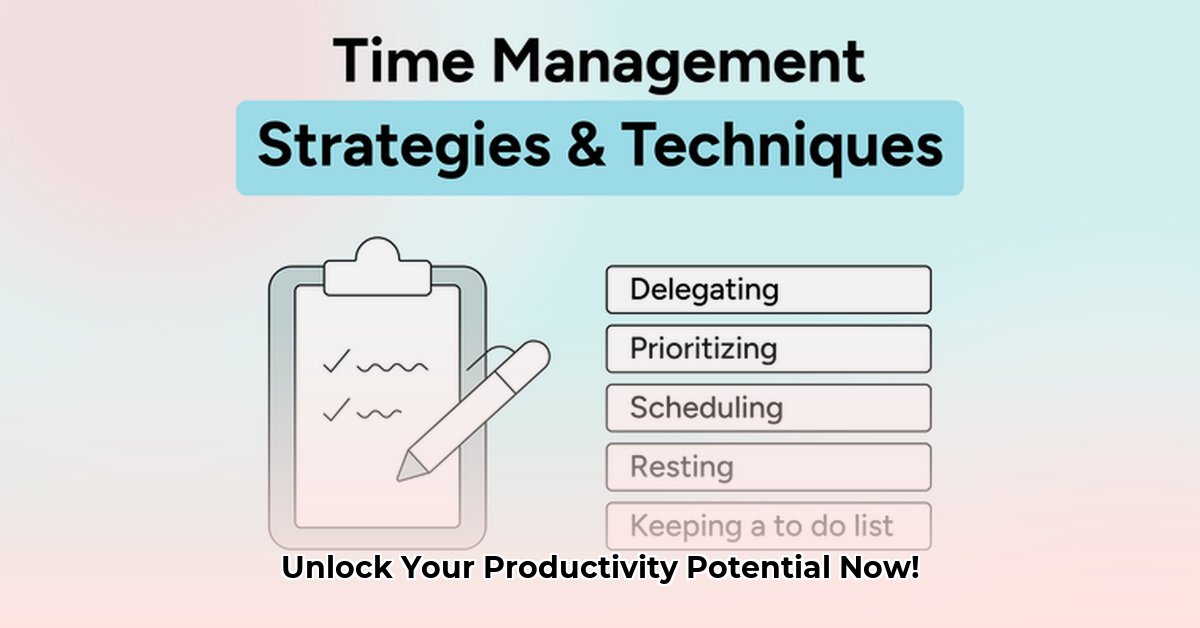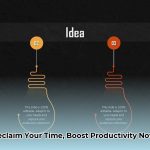Feeling overwhelmed? Wish you could juggle work, family, and everything else without losing your mind? You’re not alone! This guide will show you how to take control of your time, so you can actually do all the things you want to do, and still have time to breathe. We’ll cover simple yet powerful techniques, practical steps, and even some common pitfalls to avoid. Whether you’re a student, a parent, or just someone who wants to get more done, this is your roadmap to a more productive and less stressful life. Let’s get started!
Time Management Strategies for Enhanced Focus
Feeling swamped? Wish you could magically stretch the day? The secret isn’t more hours, it’s smarter time management. Let’s help you unlock your potential with effective time management strategies for enhanced focus!
Getting a Grip on Your Time: Understanding Time Allocation
Before we dive into techniques, let’s figure out where your time actually goes. Try tracking your activities for a week – even a rough estimate helps. You might be surprised! See that endless email chain? That hour scrolling through social media? Spotting these time-sucks is step one to reclaiming your precious hours. This self-awareness is the bedrock of good time management. There are several apps available that can help you keep track of your time and identify these areas for improvement.
Prioritize Like a Boss: Implementing the Eisenhower Matrix for Task Prioritization
The Eisenhower Matrix (also called the Urgent/Important Matrix) is a game-changer. It sorts tasks into four quadrants:
| Quadrant | What it means | Example | What to do |
|---|---|---|---|
| I: Urgent & Important | Burning deadlines, crises | A client needs a report right now | Do it immediately! |
| II: Important, Not Urgent | Long-term goals, planning, relationship building | Planning your next project, taking a course | Schedule time for it. |
| III: Urgent, Not Important | Distractions, meetings you could skip | Unnecessary meetings, emails that don’t really matter | Delegate if possible, or just say no! |
| IV: Neither Urgent nor Important | Pure time-wasters | Endless social media scrolling, aimless web surfing | Ditch ’em! |
Mastering this simple matrix shifts your focus to what truly matters. It’s like getting mental super-powers! Did you know that prioritizing tasks can increase productivity? Using the Eisenhower Matrix is one way to help you prioritize.
Supercharge Your Focus: Optimizing Productivity with Techniques
The Pomodoro Technique is all about short bursts of intense focus. You work for 25 minutes, then take a short break. Repeat. It’s a surprisingly effective way to stay sharp and avoid burnout. It’s simple, but highly effective for many.
Then there’s “Eat the Frog.” This means tackling your biggest, most challenging task first thing in the morning. Getting it out of the way builds momentum and stops procrastination from derailing your whole day. Both have their pros and cons; experiment to see what works best for you.
Another helpful tool is time batching. If you have a set of similar projects, try to do them at the same time. By grouping these tasks, you can knock them out quickly without devoting the brainpower and energy to adjusting to a new job. This also helps to increase productivity as you’re not juggling too many different tasks at once.
Planning: Creating a Structured Roadmap to Maximize Output
Effective planning isn’t optional; it’s essential. Set aside time each day or week to plan. Creating a to-do list is an easy way to prioritize. Whether you need a daily, weekly, or monthly list depends on your lifestyle. Break down huge projects into smaller, bite-sized pieces. This makes things seem less overwhelming and keeps you motivated. Think of it as a map guiding you to success.
Tech Tools: Enhancing Efficiency with Digital Time Management
Lots of apps and software can help you manage your time. Calendar apps, to-do list makers, and productivity tools can streamline your workflow and make you super organized. Explore what’s out there and find tools that fit your style, not the other way around. There’s no one magic bullet.
The Continuous Improvement Game: Adapting and Refining Over Time
Time management isn’t a one-and-done thing. It’s an ongoing process. Regularly review your system. What’s working well? What could be better? Tweak your strategies as you go. Continuous self-assessment is key to long-term success. It’s all about learning and adapting.
Finding Your Balance: Achieving Sustainable Productivity and Well-being
Effective time management isn’t just about being productive; it’s about finding a sustainable work-life balance. Schedule time for relaxation, hobbies, and connecting with loved ones. This isn’t a luxury; it’s vital for your well-being and long-term success. Protect this time; it’s your personal recharge. Remember, it’s a marathon, not a sprint. You’ll find what works best for you over time and gradually improve your time management with this method.
How to Adapt Time Management Techniques to Different Personality Types for increased efficiency
Key Takeaways:
- Understanding your personality type is crucial for effective time management.
- Different time management strategies suit different personalities.
- Experimentation and adaptation are key to finding your optimal approach.
- Long-term success requires consistent review and refinement.
- Objective measures are needed to validate perceived time management effectiveness.
Understanding the Personality-Time Management Connection: Tailoring Strategies
Why do some people seem effortlessly organized, while others constantly struggle with deadlines? It’s not just about willpower; it’s about understanding how to adapt time management techniques to different personality types. Research suggests a strong correlation between personality traits and time management styles, although more objective studies are needed. For instance, individuals identified as “Sentinels” – those who value structure and routine – often report feeling more in control of their time. But what about the rest of us?
Matching Strategies to Personalities: Maximizing Individual Productivity
Let’s explore some common personality types and approaches that work best for them:
1. The Planner (Judging Types):
These individuals thrive on structure and predictability. They benefit greatly from detailed schedules, to-do lists, and project management tools. Methods like Getting Things Done (GTD) or the Eisenhower Matrix (prioritizing tasks based on urgency and importance) are highly effective.
- Example: A planner might allocate specific time blocks for tasks, using a digital calendar and setting reminders.
2. The Free Spirit (Prospecting Types):
These individuals prefer flexibility and spontaneity. Rigid schedules can feel restrictive. The Pomodoro Technique (working in focused bursts with short breaks) or timeboxing (allocating a specific time for a task regardless of completion) can be better fits.
- Example: A free spirit might use the Pomodoro Technique, breaking up their day into 25-minute work intervals, followed by short breaks to maintain focus.
3. The Decisive Leader (Assertive Types):
These individuals are action-oriented and confident in their decision-making. They’re efficient at delegating and prioritizing critical tasks. They might prefer methods that allow rapid progress and immediate feedback, like the “Eat the Frog” technique (tackling the most challenging task first).
- Example: A decisive leader could start their day by completing their most challenging assignment, building momentum for the rest of the day.
4. The Cautious Thinker (Turbulent Types):
These individuals are detail-oriented and value thoroughness. They might benefit from a combination of approaches – meticulous planning combined with flexible buffers for unexpected delays. They appreciate time management systems that accommodate thoroughness.
- Example: A cautious thinker will likely adopt a hybrid approach, meticulously planning their day but also building in contingency time for unanticipated problems.
Refining Your Approach: Step-by-Step Personalization
- Identify Your Personality Type: Utilize online personality assessments (like those based on the Myers-Briggs Type Indicator) to gain insights into your preferences.
- Experiment: Try different time management techniques. Don’t be afraid to experiment. What works for one person might not work for you.
- Track Your Progress: Monitor your effectiveness with each technique. Which methods lead to greater productivity and reduced stress?
- Adapt and Refine: Based on your observations, adjust your approach accordingly. Continuously refine your system for optimal results.
- Seek Feedback: Get input from others. How does your time management impact your team or relationships?
- Embrace Flexibility: No system is perfect. Be prepared to adapt your strategies as your needs and priorities change.
Moving Forward: Strategies for Long-Term Time Management Success
Long-term success in time management requires ongoing self-reflection and adjustments. Regularly review your progress and make necessary modifications to maximize your productivity and overall well-being. Remember: the journey to mastering time management is a personal one. It’s about finding the system that fits you and allows you to achieve maximum output.
Time Management Strategies for Remote Workers: Optimizing Productivity
Key Takeaways:
- Proactive scheduling and task prioritization are essential for remote work success.
- Identifying and eliminating time-wasting activities boosts productivity.
- Defined work hours and deliberate disengagement are crucial for work-life balance.
- Effective communication and boundary setting are paramount in remote teams.
- Corporate Wellness Programs Cost Factors Impacting Your Company Budget - December 18, 2025
- Unpacking the Cost of Wellness Programs and Their Real Value - December 17, 2025
- How Much Do Wellness Programs Cost Businesses To Offer? - December 16, 2025
















